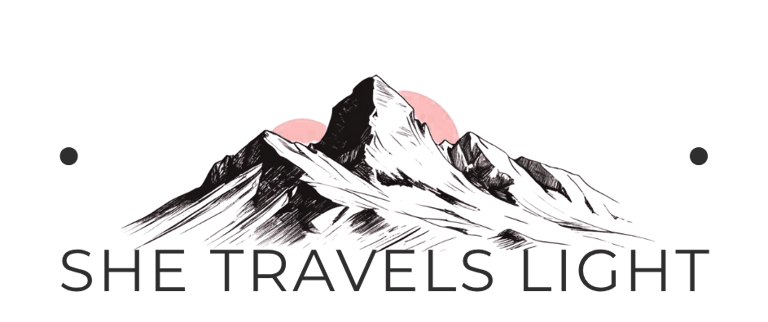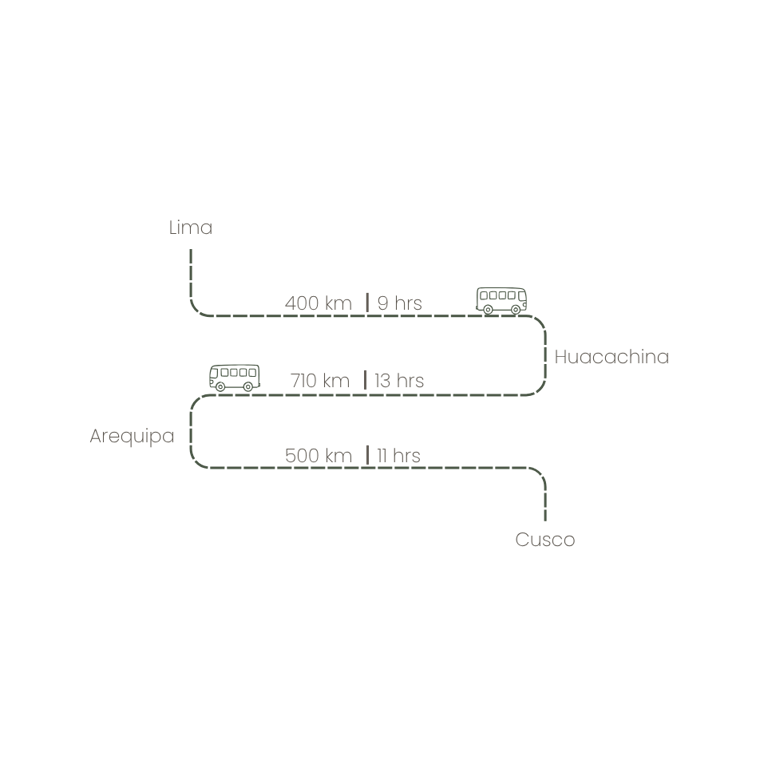Backpacking Peru: Classic South to East Itinerary (3 weeks)
Discover the iconic side of Peru with this 3-week South Peru itinerary, from Lima to Huacachina, Arequipa, and Cusco. Sandboard in the desert, explore volcano valleys, and hike the Salkantay or Inca Trail to Machu Picchu. Part of the Peru Itinerary Series for Adventurous Female Backpackers.
Backpacking Peru: Classic South to East Itinerary (3 weeks)
Discover the iconic side of Peru with this 3-week South Peru itinerary, from Lima to Huacachina, Arequipa, and Cusco. Sandboard in the desert, explore volcano valleys, and hike the Salkantay or Inca Trail to Machu Picchu. Part of the Peru Itinerary Series for Adventurous Female Backpackers.
28/10/2025 • 9 min read
If you’ve ever dreamed of seeing Peru’s most famous landscapes - desert dunes, colonial cities, deep canyons, and ancient Inca trails - this route is the one.
It’s the classic south-to-south-east journey that most travelers take for good reason. From Lima’s Pacific cliffs to the sand dunes of Huacachina, the dramatic peaks around Arequipa, and finally, the sacred heart of the Andes in Cusco, it’s Peru in its most iconic form.
This is the route I recommend if you want a balance of comfort and adventure, with plenty of history and good food along the way. You can do it entirely by bus, or choose to fly between Lima and Cusco to save time. This itinerary will follow the route I did in bus: Lima → Huacachina → Arequipa → Cusco.
Stop 1 – Lima
Days: 3
I’ll be honest — I wasn’t a big fan of Lima. Traveling as two women, it didn’t feel like a city I wanted to explore too deeply. There are nice areas and good food, but if you’re looking for that capital-city buzz, I’d say look elsewhere. Peru is about its landscapes, not its capital.
That said, it’s still worth a couple of days — mostly to regroup, enjoy a few comforts, and prepare for the long southern stretch. If you arrive after a night on the road and leave in a night bus on the third day, you'll have almost three full days.
What to do
Visit Barranco, the artistic neighborhood, for cafés and murals.
Try some good food — Lima is known for it, even if the city itself didn’t win me over. We did a DIY food tour, following Netflix show "Watch Street Food: Latin America".
Do a ceviche and Pisco Sour cooking class with Llaqta Wasi.
DIY walking tour through the Historic Center and/or Miraflores, or do a Free walking Tour (10 USD) with for example Guru Walk - I really enjoyed these tours.
Where to eat and drink
Milenaria Cafe: Enjoy a coffee and a sweet treat in this cosy establishment in a nice areas of the city.
Al Toke Pez: A busy place, so expect a line. They serve the best ceviche, rice with seafood, and deep-fried giant squid. If you haven't seen it already, this place is also featured in Netflix series: Street Food: Latin America.
Restaurante Huerta - Chinen: Another busy place for lunch. They serve traditional Peruvian cuisine. Just order what ever the locals are eating!
Where to stay
The Secret Garden Hostel (10 USD/N): Unlike the other recommendations, this price is for a dorm. I think it's worth it as it's located in the charming neighbourhood, Miraflores. The place has true hostel vibes. 7,7 out of 10 on hostelworld.com (October 2025).
How to get to the next stop: Huacachina
There are several daily buses from Lima to Ica (around 4–5 hours). You can also stop in Pisco if you plan to visit the Paracas National Reserve. However, what we did was to book a guided tour, which took us to Las Ballestas (to see sealions), then to Pisco where we tried different kinds of Pisco, and then in the end, to the desert oasis Huacachina. The original itinerary was going from the desert to the small town close by, Ica, to take a night bus to the next stop.
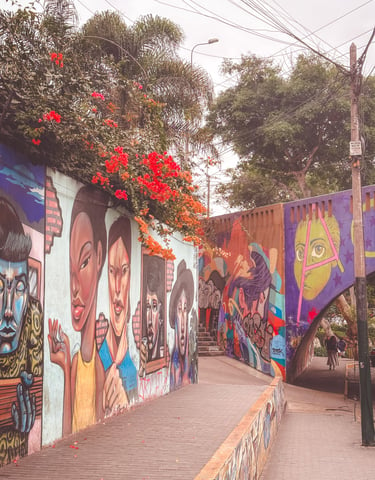


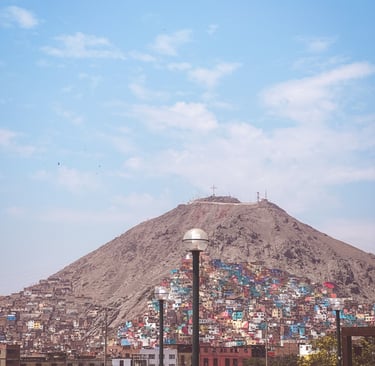
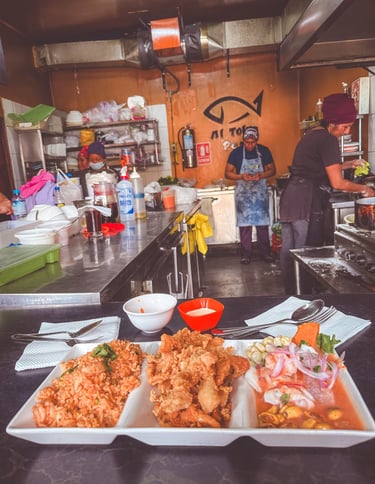

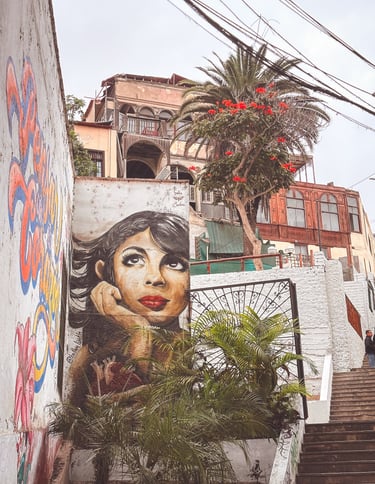

Stop 2: Huacachina
Days: 2 (optional)
I have mixed feelings about this stop. If you’ve read my post about the Uyuni Salt Flats tour, you might already guess why. I’m happy I went — because it connected us naturally toward Arequipa — but it was also one of the most touristy parts of Peru for me. We went with a group tour from Lima to here, so we could see Las Balletas and Pisco on the way.
We did the usual: the desert dunes, the oasis, the group tours. But honestly? Taking group pictures with strangers, following a guide’s schedule, eating at tourist stops — it’s just not for me. I missed the freedom of traveling independently.
Still, as with Uyuni, I’m glad I experienced it once. Seeing the endless desert is impressive, and if you’ve never been in dunes that size, it’s worth it for that reason alone. From research I know that there should be some pretty fun oasis hostels. A bit pricy, but should be a nice experience - and this itinerary is more about experiencing all without being too stressfull.
What to do
Visit Huacachina Oasis, try sandboarding and dune buggy.
If you’re into wildlife, go on a boat tour to the Ballestas Islands near Paracas (would be on the way to the desert).
Visit Pisco for some Pisco tastings on the way to the desert.
Or, simply use this as a transit stop toward Arequipa.
How to get to the next stop: Cusco
To get from Huacachina to Ica, you can go with a little tuc-tuc kind of looking scooter. It's a very short ride. From Ica, take a night bus to Arequipa (around 12 hours). Buses are comfortable, and it saves you a night of accommodation. For this trip I would just buy the tickets online on RedBus so you don't have to spend too much time in Ica, trying to find the bus station to buy them there.
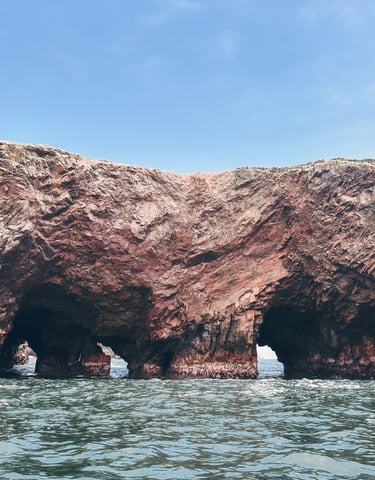

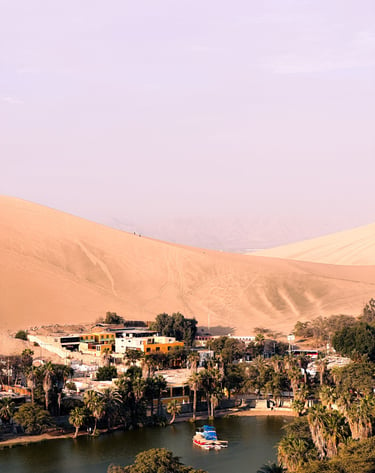

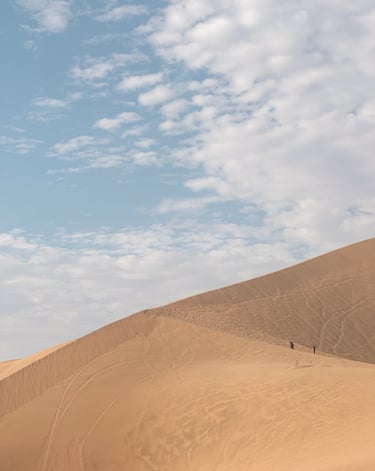

Stop 3: Arequipa
Days: 4-6
We had too few days here, and I regret that. Arequipa instantly became one of my favorite cities in Peru — beautiful architecture, a calm vibe, and surrounded by volcanoes. It feels more like a charming town than a big city, and the food in the south? Just wow.
If I could redo this trip, I’d stay longer and do the Colca Canyon trek, which we didn’t have time for.
What to do
Explore the Santa Catalina Monastery — it’s like a city within a city.
Visit Mirador de Yanahuara for views of El Misti volcano.
Go for a walk in Calle Mercaderes for its shops and cafes and the historic San Lázaro neighborhood for its charming, old-world atmosphere.
Take a multi-day trek (two or three days) to Colca Canyon. Most hostels have tours you can join. I didn't do this due to time limitations, but something I would have loved to do.
Go climbing with an instructor. It was the first time I ever tried and it was terrifying and amazing at the same time. We booked through our hostel.
Where to eat and drink
La Nueva Palomino Picantería: Want to try tradicional Arequipeña food? Then this is the place! The location is in a nice neighbourhood with small streets and white houses, the food is amazing, and there has been thinking about every little details in the restaurant's interior design.
My favourite 'Menu del Día' was in Arequipa. The food in this area is so flavourful and variated, which is also reflected in the lunch offers.
Where to stay
Econunay Hostels (24USD/N incl. breakfast): Good private room, cosy common areas, functional kitchen, kind and social staff, and all in all a great atmosphere. 9,3 out of 10 stars on hostelworld.com (October 2025).
How to get to the next stop: Cusco
There are long-distance buses from Arequipa to Cusco (10–11 hours). Book online via redBus Peru or buy the ticket at the bus station.

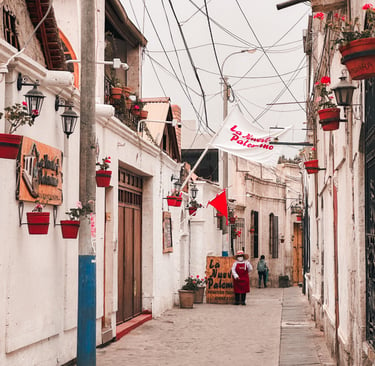
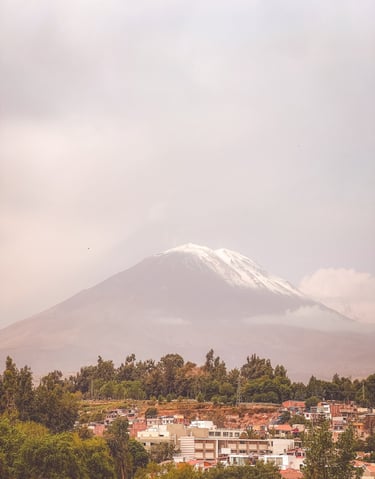

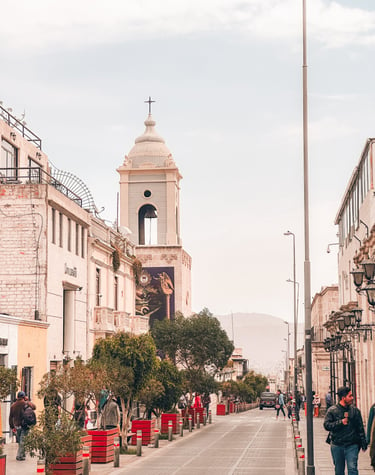

Stop 4: Cusco
Days: 12
Cusco is where many travelers either start or end their big trek to Machu Picchu — and for good reason. The city itself is lovely, though definitely tourist-heavy, with plenty of cozy cafés and a mix of local and traveler energy.
As Cusco has a lot to offer, and not only Machu Picchu, I recommend spending around 12 days here — three to settle in and acclimatize before your trek, four or five days for the Salkantay or Inca Trail, and two or three days after to recover and explore a bit more of Cusco and the Sacred Valley.
What to do
Visit the San Blas neighborhood for cafés and artisan shops.
Explore Sacsayhuamán ruins just above the city.
Enjoy the view of Cusco from Mirador de San Cristobal - and feel the altitude.
Take a day trip to Pisac or Ollantaytambo in the Sacred Valley — both worth it if you have an extra day or two.
Use the time to prepare for your trek — Salkantay or Inca Trail (I did the Salkantay Trek and will cover that in another post).
When you come back from the multi-day trek, get a massage.
Day-hike to Humantay Lake (if you don't to the Salkantay Trek) or the Rainbow Mountain (Vinicunca or the quieter Palccoyo).
Where to stay
El Sleepy Mouse (16USD/N): Nice, quiet hostel about 10 mins walk from Plaza de Armas and with a fully equipped kitchen. Also one of the more affordable hostels with private rooms. 9 out of 10 stars on Hostelworld.com (October 2025).
How to get to the next stop: La Paz (Bolivia)
Buses go directly from Cusco's main bus terminal to Bolivia's Capital, Las Paz. It's a long journey of 14-16 hours.
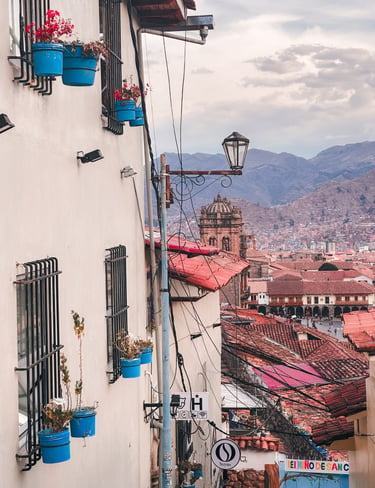

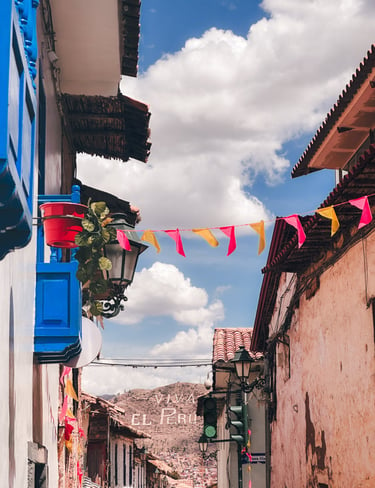

Final notes
The itinerary I propose would work out for me as it is, but it’s important that you plan it in a way that suits your interests and curiosity. I’m a nature lover and have given extra time to the places where you can experience incredible landscapes and challenge yourself outdoors. That might not be for everyone — and that’s perfectly okay.
The most important thing to know is that it’s entirely possible to travel by bus through all of Peru, and I find that amazing. It’s cheap, mostly comfortable, and offers beautiful scenery along the way — unless, of course, you’re on a night bus (which is still a great way to save money on accommodation).
Adjustments to the itinerary
Save time:
If you’re short on time, you can fly directly between Lima and Cusco, and minimise the time spent in a bus.
Another way to save time is to skip Huacachina or do it as a quick day trip from Lima, like we did as a fun travel between Lima and Arequipa.
Third, I have dedicated a lot of days to Cusco by recommending doing one of the multi-day treks to Machu Picchu. However, if it's not for you, but you want to see Machu Picchu, you can still do that in only one day.
Continue your travels from Cusco to Puno and/or La Paz:
If you don't want to go back to Lima, you could continue your travels through Peru. You could either go to Bolivia's capital, La Paz, and then pass through Puno and Lake Titicaca to break up the long bus journey. We didn’t stop on the way to La Paz because we already had our Uyuni Salt Flat Tour planned in Bolivia — you can read more about that experience here and why I had mixed feelings about it.
What to pack
With this itinerary, you’ll need to pack everything from shorts to a winter jacket and rain pants. It’s absolutely possible if you pack smart — I’ve done it myself while traveling for six months across South America. You can read all about my packing list here.
And one more thing: you’ll spend a lot of hours on buses. Make it as comfortable as you can and only bring what’s necessary. I’ve also made a separate list with all my bus travel essentials, which you can read here.
